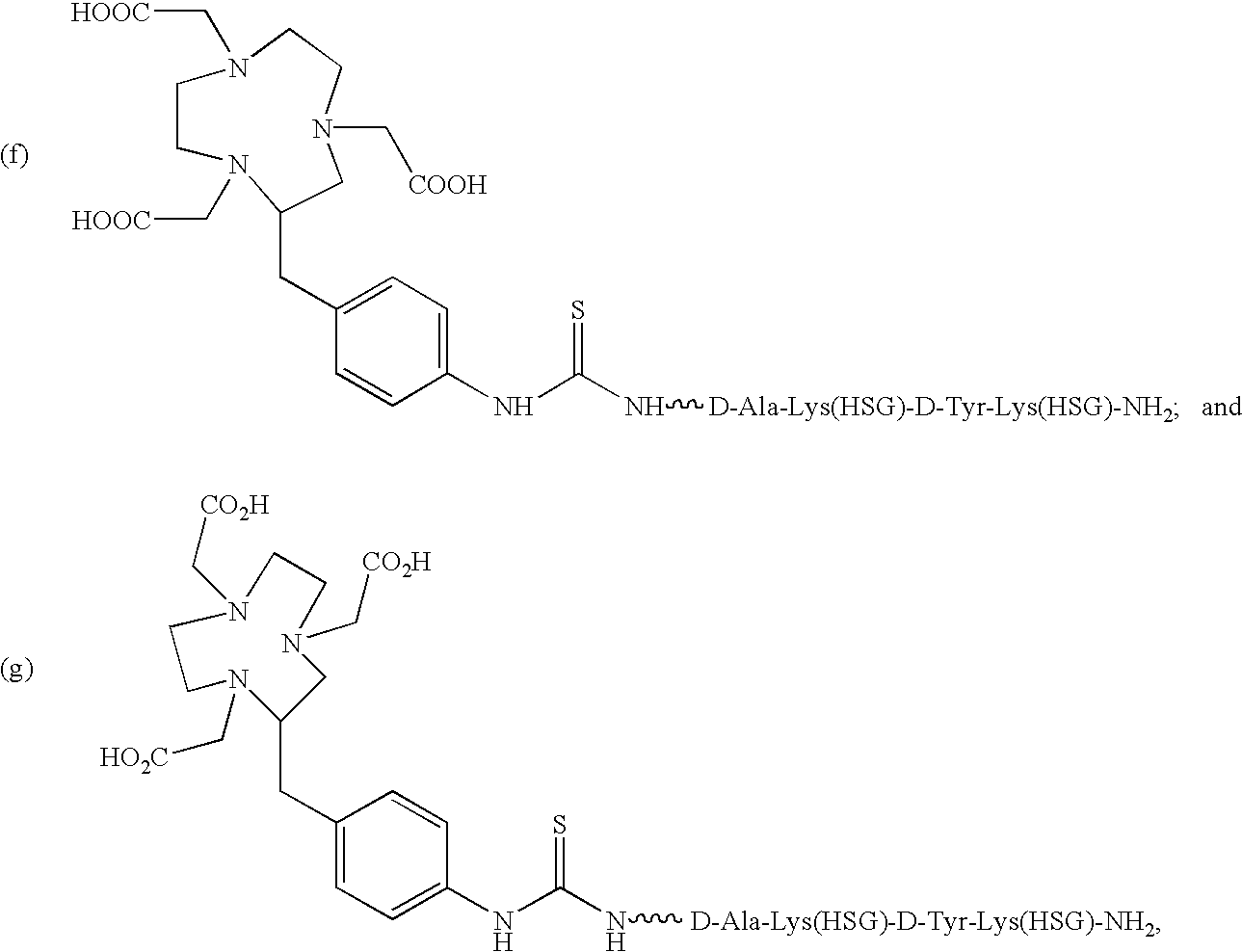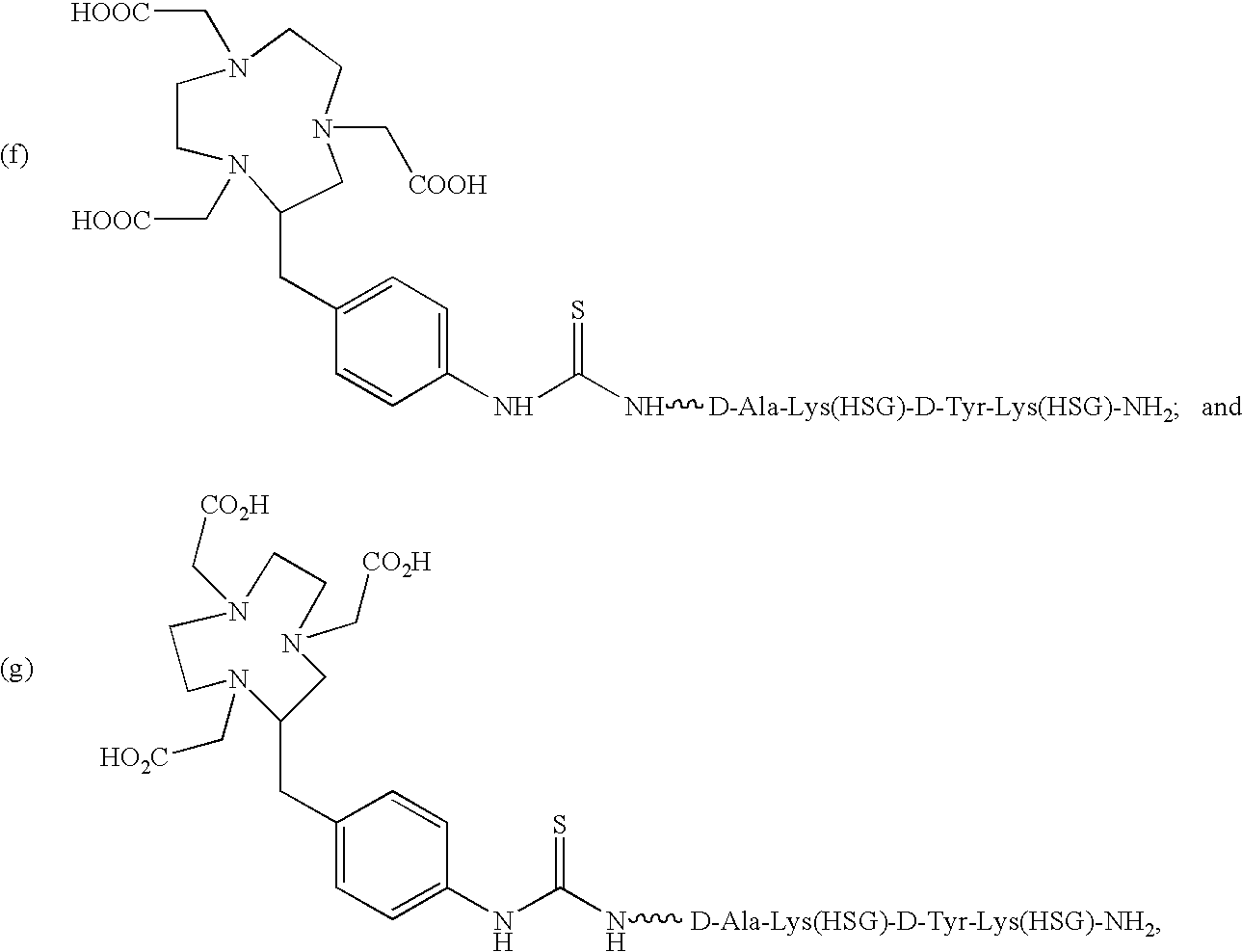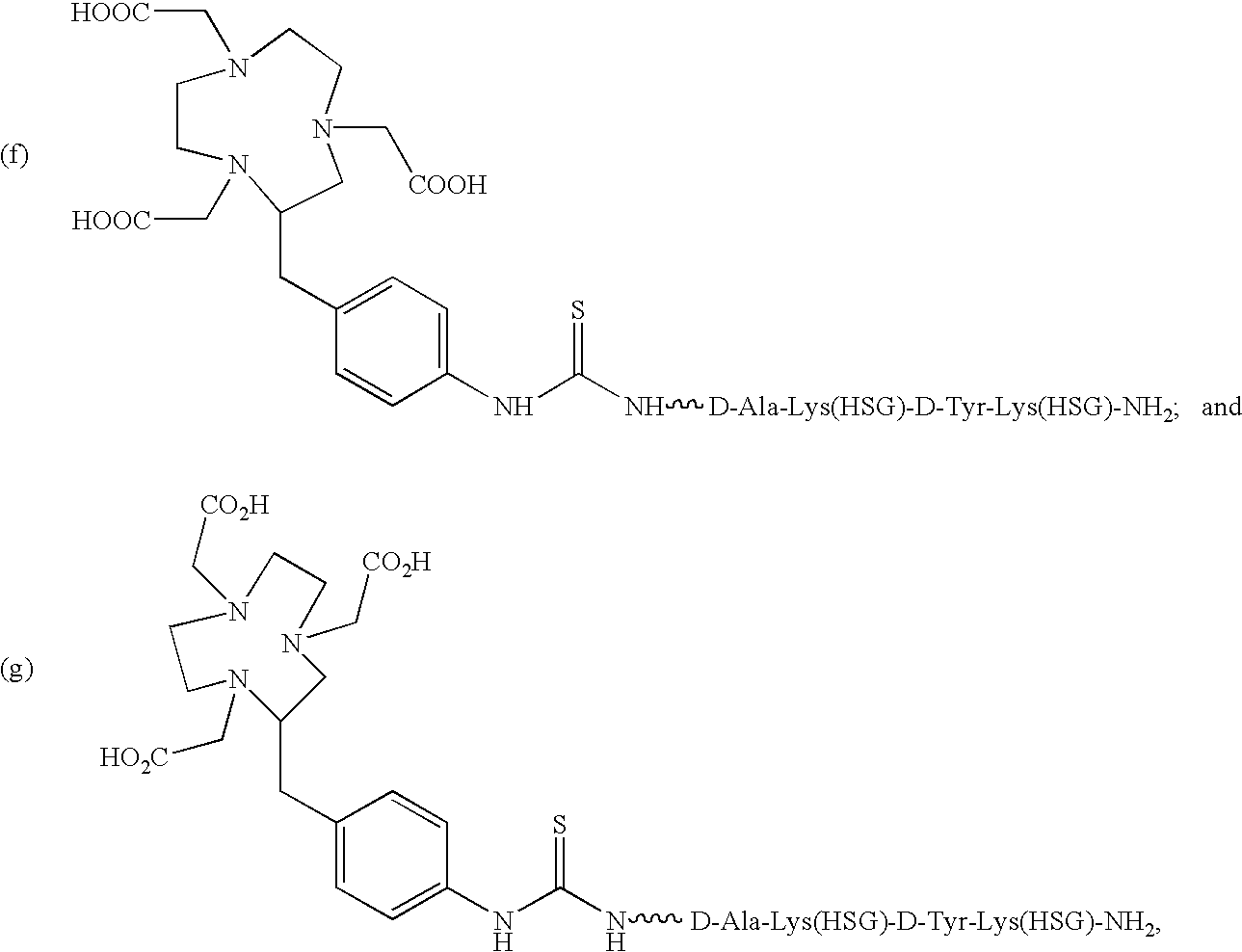Use of bi-specific antibodies for pre-targeting diagnosis and therapy
- Summary
- Abstract
- Description
- Claims
- Application Information
AI Technical Summary
Benefits of technology
Problems solved by technology
Method used
Image
Examples
example 1
Synthesis of Ac-Lys(HSG)-D-Tyr-Lys(HSG)-Lys(Tscg-Cys-)-NH.sub.2 (IMP 243)
[0267] The peptide was synthesized as described by Karacay et. al. Bioconjugate Chem. 11:842-854 (2000) except D-tyrosine was used in place of the L-tyrosine and the N-trityl-HSG-OH was used in place of the DTPA. The final coupling of the N-trityl-HSG-OH was carried out using a ten fold excess of N-trityl-HSG-OH relative to the peptide on the resin. The N-trityl-HSG-OH (0.28 M in NMP) was activated using one equivalent (relative to HSG) of N-hydroxybenzotriazole, one equivalent of benzotrazole-1-yl-oxy-tris-(dimnethylamino)phosphonium hexafluorophosphate (BOP) and two equivalents of diisopropylethylamine. The activated substrate was mixed with the resin for 15 hr at room temperature.
example 2
Tc-99m Kit Formulation Comprising IMP 243
[0268] A formulation buffer was prepared which contained 22.093 g hydroxypropyl-.beta.-cyclodextrin, 0.45 g 2,4-dihydroxybenzoic acid, 0.257 g acetic acid sodium salt, and 10.889 g .alpha.-D-glucoheptonic acid sodium salt dissolved in 170 mL nitrogen degassed water. The solution was adjusted to pH 5.3 with a few drops of 1 M NaOH then further diluted to a total volume of 220 mL. A stannous buffer solution was prepared by diluting 0.2 mL of SnCl.sub.2 (200 mg / mL) with 3.8 mL of the formulation buffer. The peptide Ac-Lys(HSG)-D-Tyr-Lys(HSG)-Lys(Tscg-Cys-)--NH.sub.2 (0.0026 g), was dissolved in 78 mL of the buffer solution and mixed with 0.52 mL of the stannous buffer. The peptide solution was then filtered through a 0.22 Jm Millex GV filter in 1.5 mL aliquots into 3 mL lyophilization vials. The filled vials were frozen immediately, lyophilized and crimp sealed under vacuum.
[0269] Pertechnetate solution (27 mCi) in 1.5 mL of saline was added to ...
example 3
Peptides for Carrying Therapeutic / Imaging Radioisotopes to Tumors via Bi-Specific Antibody Tumor Pretargeting
[0270] DOTA-Phe-Lys(HSG)-Tyr-Lys(HSG)-NH.sub.2 (IMP 237) was synthesized to deliver therapeutic radioisotopes such as .sup.90Y or .sup.177Lu to tumors via bi-specific antibody tumor pretargeting. The bi-specific antibody is composed of one portion which binds to an antigen on the tumor and another portion which binds to the HSG peptide. The antibody which binds the HSG peptide is 679. This system can also be used to deliver imaging isotopes such as .sup.111In-111.
[0271] Synthesis of IMP 237
[0272] IMP 237 was synthesized on Sieber Amide resin (Nova-Biochem) using standard Fmoc based solid phase peptide synthesis to assemble the peptide backbone with the following protected amino acids, in order: Fmoc-Lys(Aloc)-OH, Fmoc-Tyr(But)-OH, Fmoc-Lys(Aloc)-OH, Fmoc-Phe-OH, (Reagents from Advanced Chemtech) tri-t-butyl DOTA (Macrocyclics). The side lysine side chains were then deprotecte...
PUM
| Property | Measurement | Unit |
|---|---|---|
| Ionizing radiation | aaaaa | aaaaa |
| Ionizing radiation | aaaaa | aaaaa |
| Temperature | aaaaa | aaaaa |
Abstract
Description
Claims
Application Information
 Login to View More
Login to View More - R&D
- Intellectual Property
- Life Sciences
- Materials
- Tech Scout
- Unparalleled Data Quality
- Higher Quality Content
- 60% Fewer Hallucinations
Browse by: Latest US Patents, China's latest patents, Technical Efficacy Thesaurus, Application Domain, Technology Topic, Popular Technical Reports.
© 2025 PatSnap. All rights reserved.Legal|Privacy policy|Modern Slavery Act Transparency Statement|Sitemap|About US| Contact US: help@patsnap.com



